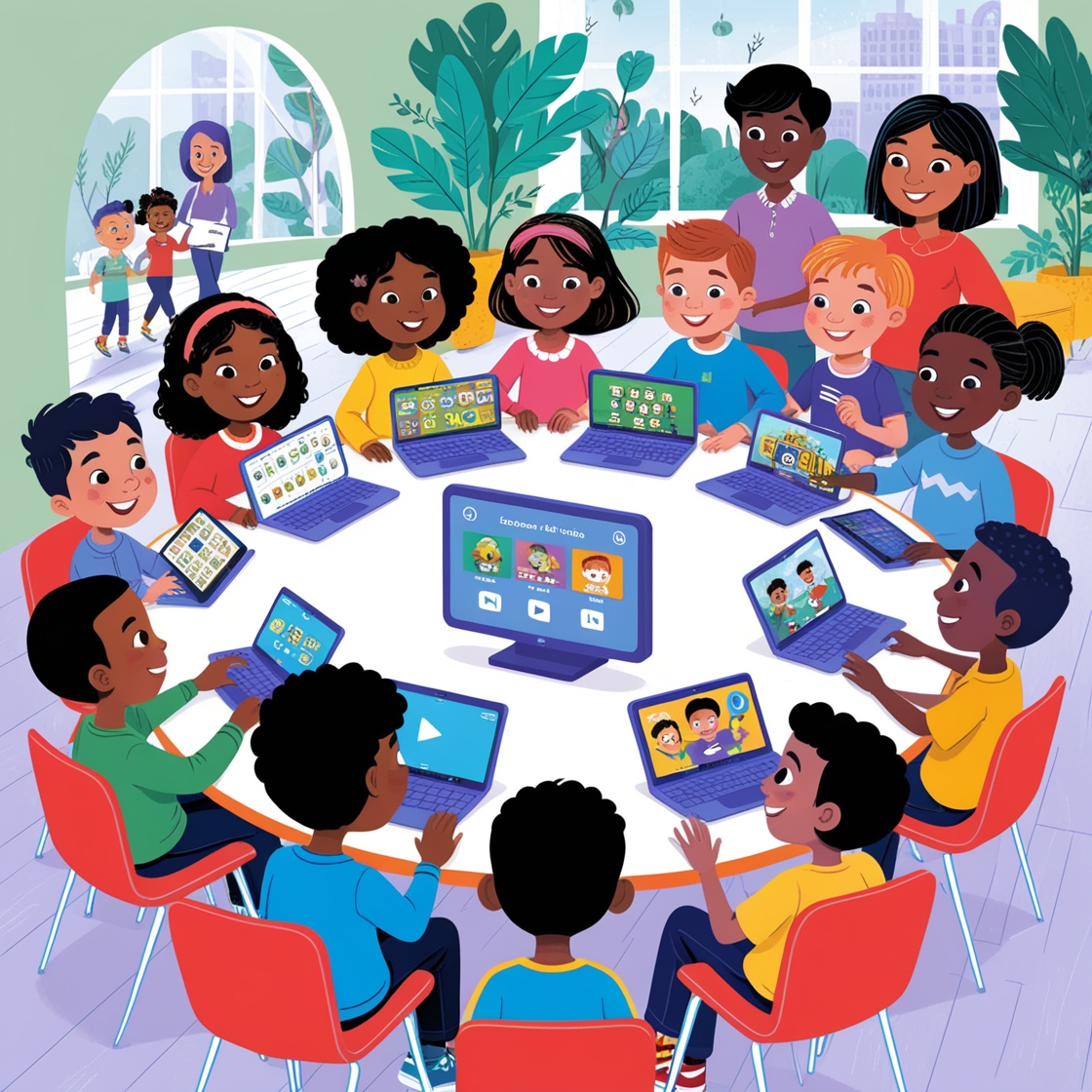Introduction
Screens are everywhere in our modern lives. Whether it’s tablets, smartphones, or TV, kids have endless access to digital content. While technology offers tremendous educational and entertainment value, excessive screen time can pose risks. The challenge for parents today is finding the right balance. Let’s dive into how we can foster healthy digital habits to ensure children benefit from technology without falling into harmful patterns.
Understanding Screen Time
What is Screen Time?
Screen time refers to the amount of time spent using digital devices like smartphones, computers, televisions, or gaming consoles. This can include time spent on social media, watching videos, playing games, or using educational tools.
Different Types of Screens Children Use
- Smartphones and tablets: Quick access to games, social apps, and streaming.
- TVs and computers: Watching shows, attending online classes, or researching.
- Video game consoles: Providing entertainment but with potential overuse risks.
Recommended Screen Time Limits by Age
The American Academy of Pediatrics (AAP) recommends:
- Ages 0-2: Avoid screens, except for video chats.
- Ages 2-5: Up to 1 hour per day of high-quality content.
- Ages 6 and above: Consistent limits on screen time, balanced with physical activity and sleep.
The Benefits of Screen Time for Children
Educational Benefits
When used correctly, screens can be powerful learning tools. Educational apps and videos teach literacy, math, and problem-solving skills.
Social Interaction and Communication Skills
Some platforms allow children to connect with friends and family, fostering communication and social bonding.
Entertainment and Creativity Opportunities
Creative apps, digital drawing tools, and video platforms inspire kids to explore new ideas and express themselves.
The Risks of Excessive Screen Time
Physical Health Issues
Long hours on screens can strain the eyes and lead to poor posture. Kids may also miss out on physical activities, increasing the risk of obesity.
Mental and Emotional Health Challenges
Excessive screen use, especially before bedtime, can disrupt sleep patterns and lead to anxiety or behavioral changes.
Impact on Academic Performance
Too much screen time can interfere with study routines, resulting in poor academic performance and lack of focus in class.
Signs Your Child Might Be Spending Too Much Time on Screens
Behavioral Indicators to Watch For
- Irritability when devices are unavailable
- Withdrawal from family or friends
Physical Symptoms Related to Overuse
- Frequent headaches or eye discomfort
- Unusual tiredness during the day
How to Foster Healthy Digital Habits
Set Clear Screen Time Limits and Boundaries
Create rules that fit your family’s needs, such as no screens before bedtime or during meals.
Encourage Offline Activities and Hobbies
Promote outdoor play, sports, and arts to create a healthy balance.
Co-Viewing and Digital Literacy Education
Watch content together and talk about online safety to help kids make informed choices.
Model Healthy Screen Use as Parents
Children learn by example. Show responsible screen use and prioritize family interaction.
Creating Screen-Free Zones and Times
Designate Screen-Free Areas in the House
Make bedrooms or dining areas screen-free to encourage meaningful conversations.
Family Screen-Free Times (e.g., Dinner)
Set specific times during the day when screens are off-limits to focus on family bonding.
Using Parental Control Tools Wisely
Apps and Software for Monitoring Usage
Use parental control apps to monitor screen time and ensure content is age-appropriate.
Managing Content Appropriately
Block inappropriate websites and encourage positive content consumption.
The Role of Schools in Digital Wellness
Teaching Responsible Technology Use
Schools play an essential role in teaching children about digital safety and proper technology use.
Encouraging Physical Activity in Learning
Incorporating outdoor activities in the curriculum helps balance screen use and movement.
Conclusion
Helping children develop healthy digital habits is essential in a world where screens are unavoidable. By setting boundaries, encouraging offline activities, and leading by example, parents can ensure their children benefit from technology without falling into unhealthy habits. It’s all about finding balance and teaching kids to use screens mindfully.
FAQs
1. How much screen time is too much for children?
The AAP suggests consistent limits based on age, emphasizing balance with sleep and physical activity.
2. What can I do if my child is addicted to screens?
Start by setting gradual limits, introducing alternative activities, and communicating the reasons behind reduced screen time.
3. Are educational apps better than regular screen use?
Educational apps are more beneficial, but they should complement real-world learning, not replace it.
4. How do I balance my child’s screen time with schoolwork?
Create a schedule that prioritizes homework and allows some screen time as a reward.
5. Can screen time impact a child’s social skills?
Yes, excessive screen time can hinder social interaction, but balanced use can enhance communication through virtual platforms.
